 [Summary] [Summary] |
Alive and dead shells mixed together in a sandy beach. |
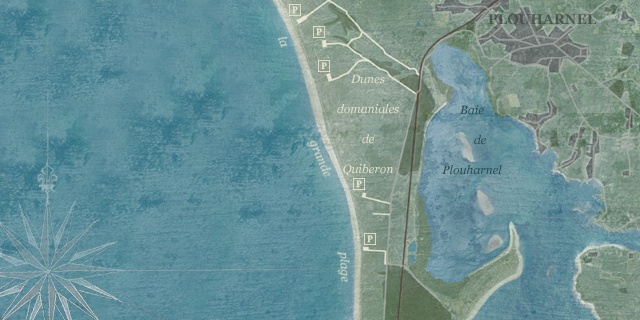 |
 On
the western side of the root of Quiberon peninsula, a wide sandy area
stretches from Penthièvre fortress up to Etel river mouth. This
is, leaning against a set of torrid dunes, the Long Beach, a place where
low tides reveal an incredibly abundant wild life. Five car parks allow
motorists to approach the sea across the desertic land that separates
the beach from the road. |
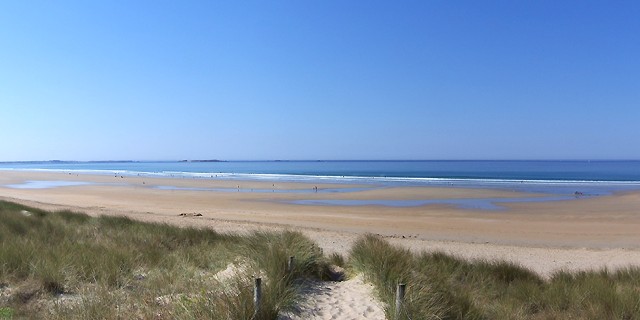 |
 "La
Grande Plage". Wild, cleaned, wide, facing the open sea. The wind
and the sound of the waves suddenly jump at your face. Click in the pic
to load a panoramic view (560Ko). |
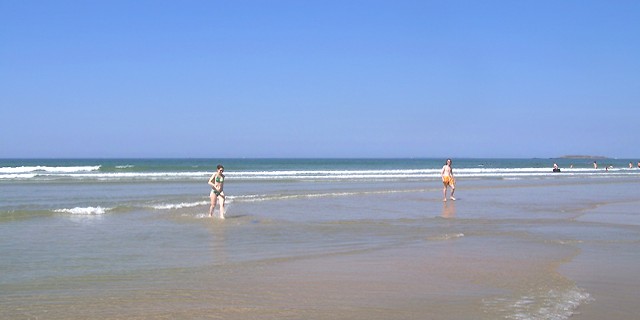 |
 The
beach in front of the Observatory. This part of the coast is named "La
Falaise", the Cliff, even if no cliff can be seen here. If mechanical
sand-cleaning is employed in the northern end near Kerhilio, this "Cliff"
area remains safe, and, then, full of wild life. |
 |
 Upper
part of the intertidal slope. Many shells are washed ashore. The "Cliff"
receives a huge population of golden Donax vittatus (da Costa,
1778), Lutraria lutraria (Linnaeus, 1758) and Mactra stultorum
(Linnaeus, 1758). Some Naticids, also, like this little Euspira catena
(da Costa, 1778). |
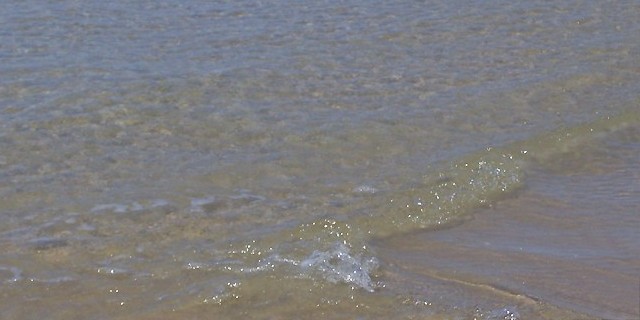 |
 Flood-tide.
Waveletts cover the hot sand. Animals begin to leave their holes. Many
living shells appear on places that were previously dotted by hundreds
of dead valves. This layer, a mixture of sand and rotten organic debris,
is like a cemetery. And, in fact, it smells. Shells live here, and die
here. The flood will blow off everybody up to the shoreline. |
 Some
of the species found in and on the sand at flood-tide: Some
of the species found in and on the sand at flood-tide: |
| |
 |
|
 |
|
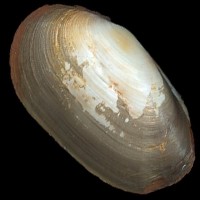 |
Acanthocardia
tuberculata
(Linnaeus, 1758) |
|
Donax vittatus
(da Costa, 1778) |
|
Lutraria lutraria
(Linnaeus, 1758) |
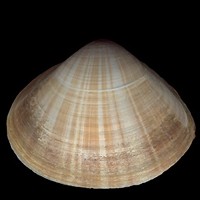 |
|
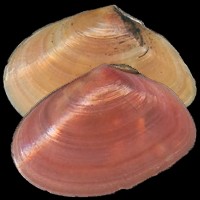 |
|
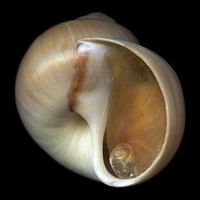 |
Mactra stultorum
(Linnaeus, 1758) |
|
Angulus tenuis
(da Costa, 1778) |
|
Euspira catena
(da Costa, 1778) |
|
 Little
crabs. Little
crabs. |
| |
 |
 PORTUNIDAE
Rafinesque, 1815: Portumnus latipes (Pennant, 1777). British Isles
to Morocco, Azores to Canarias, Mediterranean, Black Sea. On fine sand,
intertidal to 30m deep. |
 |
 It
burrows in sand in which it tends to disappear with its (most of time)
excellent camouflage. Carapace ca. 2x2cm. A close species is P. pestai
from Med. sea, whose carapace is wider than long. Sometimes, there is
a white spot on the dorsum (see below). |
 |
 Frontal
margin with three teeth, the median one being the longest. Anterolateral
margins with five smooth indentations; #2 and #4 very weak. Picture ©
Celine Hamm, Almere, Nederland. |
 |
 The
"Crab-surprise" game. Where will they climb? Picture ©
Celine Hamm. |
 Thanks... Thanks... |
| |
 [Summary] [Summary] |














